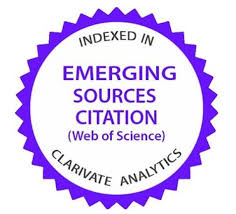Artificial Intelligence in Art Education: Transforming Visual Arts Training
DOI:
https://doi.org/10.23947/2334-8496-2025-13-2-481-489Keywords:
visual art education, artificial Intelligence, AI-generated imagesAbstract
The rising integration of artificial intelligence into the process of creating artwork and its deployment in various professional tasks signifies a notable change in how technology is utilized across different domains. AI is rapidly becoming favoured among students to address various learning challenges. A thoughtful selection of how AI is applied in creative assignments can enhance student creativity and improve outcomes when producing diverse visual content. This article reports on an experiment aimed at generating art products using various AI applications, resulting in image creations based on verbal descriptions. The objective of the educational experiment is to motivate students to create artistic works by utilizing AI, guided by descriptive words, and improving their projects by applying them to different AI software. The research employs visual analysis and comparative analysis to assess the educational artworks produced by students, contrasting those stemming from their imagination with those generated through AI based on their descriptions. Survey Analysis of Using AI in Visual Arts Education. Findings reveal that student satisfaction levels correlate with their creativity; more creative students tend to be less satisfied with the outcomes. There are significant distinctions in the artistic and aesthetic effects of images relating to lines, shapes, and techniques. In conclusion, AI-generated images can greatly enrich the creative process by providing artists with new visual interpretations of their concepts. While AI can effectively produce new images in response to artists’ creative briefs, it does not replace human creativity in the artistic process. Instead, the incorporation of AI tools serves as a complementary resource, enhancing the artistic ecosystem in the creative process.
Downloads
References
Bardini, T. (2000). Bootstrapping: Douglas Engelbart, coevolution, and the origins of personal computing. Stanford University Press. DOI: https://doi.org/10.1515/9781503618367
Chen, I. C., Bradford, L., & Schneider, B. (2022). Learning Career Knowledge: Can AI Simulation and Machine Learning Improve Career Plans and Educational Expectations? In AI in Learning: Designing the Future, 137-158. Cham: Springer International Publishing. https://dx.doi.org/:0.1007/978-3-031-09687-7_9 DOI: https://doi.org/10.1007/978-3-031-09687-7_9
Choi, S. K., DiPaola, S., & Töyrylä, H. (2021). Artistic style meets artificial intelligence. Journal of Perceptual Imaging, 4, 1-14. DOI: https://doi.org/10.2352/J.Percept.Imaging.2021.4.2.020501
Haber, N. (2022). Curiosity and Interactive Learning in Artificial Systems. In AI in Learning: Designing the Future, 37-54. Cham: Springer International Publishing. https://dx.doi.org/10.2352/J.Percept.Imaging.2021.4.2.020501 DOI: https://doi.org/10.1007/978-3-031-09687-7_3
Kong, F. (2020). Application of artificial intelligence in modern art teaching. International Journal of Emerging Technologies in Learning (iJET), 15(13), 238-251. https://dx.doi.org/10.3991/ijet.v15i13.15351 DOI: https://doi.org/10.3991/ijet.v15i13.15351
Korhonen, T., Lindqvist, T., Laine, J., & Hakkarainen, K. (2022). Training Hard Skills in Virtual Reality: Developing a Theoretical Framework for AI-Based Immersive Learning. In AI in Learning: Designing the Future, 195-213. Cham: Springer International Publishing. https://doi.org/10.1007/978-3-031-09687-7_12 DOI: https://doi.org/10.1007/978-3-031-09687-7_12
Niemi, H., Pea, R. D., & Lu, Y. (2023). AI in Learning: Designing the Future, 344. Springer Nature. https://dx.doi.org/10.1007/978-3-031-09687-7_1 DOI: https://doi.org/10.1007/978-3-031-09687-7
Ryoo, A. (2014). Art education and new media: understanding the roles of artists and educators in the age of immediacy (Doctoral dissertation, University of British Columbia).
UNESCO (United Nations Educational, Scientific and Cultural Organization). (2021a). AI and education: guidance for policy-makers (2021): Paris. https://unesdoc.unesco.org/ark:/48223/pf0000376709
Vivitsou, M. (2022). Perspectives and Metaphors of Learning: A Commentary on James Lester’s Narrative-Centered AI-Based Environments. In AI in Learning: Designing the Future, 125-136. Cham: Springer International Publishing. https://doi.org/10.1007/978-3-031-09687-7_8 DOI: https://doi.org/10.1007/978-3-031-09687-7_8
Worsley, M. (2022). Artificial Intelligence Innovations for Multimodal Learning, Interfaces, and Analytics. In AI in Learning: Designing the Future, 19-35. Cham: Springer International Publishing. https://doi.org/10.1007/978-3-031-09687-7_2 DOI: https://doi.org/10.1007/978-3-031-09687-7_2
Yao, B. Z., Yang, X., Lin, L., Lee, M. W., & Zhu, S. C. (2010). I2t: Image parsing to text description. Proceedings of the IEEE, 98(8), 1485-1508.-1. https://doi.org/10.1109/JPROC.2010.2050411 DOI: https://doi.org/10.1109/JPROC.2010.2050411
Published
How to Cite
Issue
Section
Categories
License
Copyright (c) 2025 Ani Zlateva

This work is licensed under a Creative Commons Attribution 4.0 International License.
Plaudit
Accepted 2025-07-11
Published 2025-08-26












